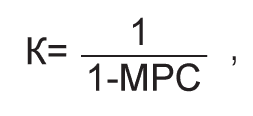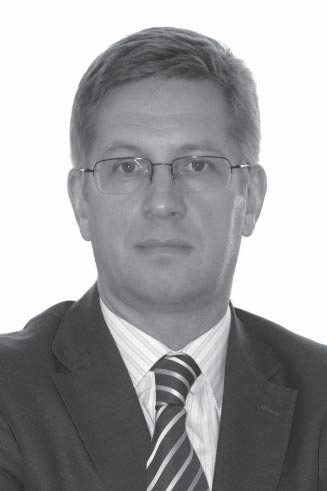Statistical estimate of evaluation of economic impact of inbound tourism on regional economy
Фотографии:
ˑ:
I.G. Kozlov, associate professor Moscow state institute for tourism industry, Moscow
V.V. Britvina, associate professor, Ph.D. Russian state university of physical culture, sport, youth and tourism (SCOLIPC), Moscow
Key words: multiplicative effect, tourism subprogram, domestic tourism, tourists’ expenses.
Introduction. Successful development of inbound tourism depends on multiple factors, which are in priority of the state policy. Assessment of the economic impact of tourism is extremely important and necessary for the analysis of efficiency of work of the tourism industry, substantiation of regional budgets of all levels of incurred costs to support, develop and promote tourism potentials of the region, calculate budget allocations for future periods, strategic and tactical planning of work of the whole complex of the regional tourism industry. This assessment is based on tourists’ expenses, directly or indirectly born in the region of stay. Here considering various aspects of economy, affected by tourists’ expenses, is especially important.
Tourism multiplier is the ratio of changes of one of key economic indicators, like production (employment, income), and changes of tourists’ expenses. The multiplier was estimated based on the Keynesian analysis.
Since local-scale enterprises are related to other supplying enterprises, any shifts of tourists’ expenses when travelling will stipulate changes on the manufacturing level of economy, income, employment, taxable base and consumption. Some coefficient is required to multiply by tourists’ expenses. Manufacturing multiplier is used to estimate the total production changes. Changes in the gross income are assessed using another coefficient that is to be multiplied by tourists’ expenses.
Tourists’ expenses are intended for tourist enterprises, serving tourists directly. Further, the obtained money of the company is distributed among the partners, retailers and service providers. Part of the money goes from sale to pay for the import of goods tourists consume in the leisure area or for the services offered by tourist enterprises located outside the area. The money tourists spend for these types of products and services are not essential in the future for generation of the economic activity. Therefore, the amount of money, actively circulating in the local economy is reduced by this amount. The remaining money is used to buy local goods and services, payment of salaries, taxes and different fees.
Some of the money in every withdrawal cycle ends up with the locals in the form of income (wages, profits, etc.). A certain amount of the money is collected and terminates its turnover in the economy. Income which is not accumulated is spent on import and goes on taxes to the state budget. Thus, gains are reduced and capital outflow from the system takes place in every cycle. Gains are spent more thanks to further generating of economic activity via tourists’ expenses.
But multiplier is to be distinguished from accelerator. The former is the ratio of new investment to the rise in production and income and the latter is the ratio of additional consumption to the rise in production and income.
Mathematically, the multiplier is expressed by the formula:

where cattle - marginal propensity to consume;
1 - MPC - marginal propensity to save.
To assess the impact of tourists’ expenses on income, employment and import different models are developed to calculate the multiplier. One of these models was developed by Archer and Owen in 1971:

where j - category of tourists, j = 1, N;
i - type of enterprise, i = 1, n;
Qj - the share of the expenses of tourists of the j-type, in overall consumption;
Kij - the share of the expenses of tourists of the j-type via i-business;
Vi - direct and indirect earnings generated by the unit of money spent by i-business;
Xi - the share of the expenditures of local residents, undertaken in i-business in the overall consumer expenditure;
Zi - the share of Xi relevant to the area of studies.
When estimating the value of the multiplier it is important not only to choose the method, but also determine the type of multiplier. Each type performs its specific functions.
Sales multiplier measures additional business turnover stipulated by the boost in spending among tourists.
Manufacturing multiplier measures the spin off in the economy funded with the boost in spending among tourists.
The principal difference between the two lies in the fact that not all sales of the manufacturing multiplier are related to current production. For example, some sales are made from stocks, when part of output is stored, not sold.
As opposed to previous models based on the partial equilibrium principle, the estimation of the multiplier using another approach (input - output) is grounded on the general equilibrium principle. According to this principle, the economy of tourist areas is presented as a matrix using a table similar to the one for national accounts. Cost sensitivity stipulated by tourist expenses is defined by the formula:
∆P = B (1 – KA)-1∙∆T,
where P - cost;
B - cost coefficient matrix, n = mx;
I - identity matrix (in elementary algebra I = 1);
K – matrix where diagonal values show the level of competitive import for each sector of the economy, which reduces the component of domestic production for the required amount when addressed to the A matrix;
A - matrix of intersectoral transactions in the economy;
T- tourists’ expenses.
This method can also be used to determine changes in employment stipulated by the boost in spending among tourists. Then the model is as follows:
B - cost coefficient matrix, n = mx;
I - identity matrix (in elementary algebra I = 1);
K – matrix where diagonal values show the level of competitive import for each sector of the economy, which reduces the component of domestic production for the required amount when addressed to the A matrix;
A - matrix of intersectoral transactions in the economy;
T- tourists’ expenses.
This method can also be used to determine changes in employment stipulated by the boost in spending among tourists. Then the model is as follows:
∆L = E (1 – KA)-1∙∆T,
where L - employment;
E - employment coefficient matrix, E = mx n.
Income multiplier measures subsidiary earnings (wages, rental fees, interest on advances and profit) generated in the economy due to boost in spending among tourists.
Employment multiplier specifies the payroll promoted by extra tourists’ expenses.
The current models of calculation of international tourism multiplier have some shortcomings eliminated in practice.
Restriction associated with inelasticity of supply, can be a deterrent when offering the required quantity and quality of goods and services in the situation of boost in tourists’ expenses. As noted above, if the excess demand is not met by local production, tourists’ extra costs provoke inflation and missing products and services are imported. Therefore the amount of the multiplier is reduced.
Many types of multipliers are static and inflexible by their nature. These restrictions can be eliminated by designing dynamic models. Limitation of the model is in the fact that the production function and the consumption function are linear and the nature of intra-sector expenses is stable, hence extra tourists’ expenses allegedly have the same impact on the economy, as an equal amount of prior expenditures. Therefore, in case of production increase goods are assumed to be purchased in the same proportions as before notwithstanding the level of future savings. Moreover, the duration of the multiplicative effect on the economy not take into account by the static nature of the multiplier.
Conclusions. The economic impact is calculated using the multiplier, i.e. the magnification of key economic indicators thanks to changes in tourists’ expenses.
The multiplier effect is typical for the effects of inbound tourism, which is reflected in all economic and social sectors of the host region.
The quantitative aspect of this effect is calculated using the coefficient showing the impact of tourism on changed sales, production, income and employment of the country-receptor.
A detailed analysis of multipliers is made to analyze the efficiency of investments of public and private sectors in tourism projects at the regional and national levels, check relative values of the effect of different types of tourism compared to other sectors of economy.
Bibliography
1. Konyukhov, V.G. Forecasting seasonal fluctuations using the methods of mathematical statistics / V.G. Konyukhov, G.P. Britvina, N.V. Konyukhova // Teoriya I praktika fizicheskoy kultury – 2012. – № 11. – P. 37–39.
Author’s contacts: saaturn@rambler.ru


